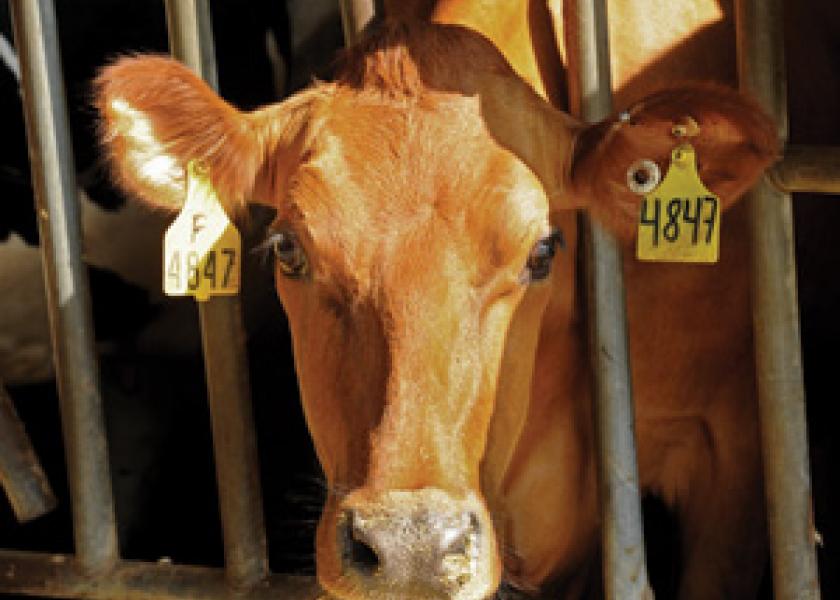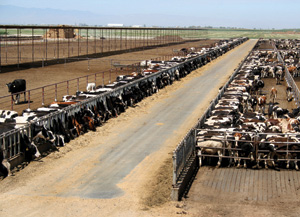National ID Debate: Readers Respond

Readers respond to RFID proposal
Note: In mid-January, Dairy Today editor Jim Dickrell posted on his blog at www.DairyToday.com about his frustrations over the lack of progress on national animal identification. The post was in response to the National Milk Producers Federation urging USDA to create a dairy-specific animal ID program. A number of readers thoughtfully responded online, and we want to share some of the highlights here. To read Dickrell’s post and readers’ responses, follow the Dot to the bonus content for the March issue.
Two Problems
There are two problems with Dickrell’s analysis as he attempts to use FMD [foot-and-mouth disease] as the boogeyman to justify animal ID.
First, how will FMD be introduced? USDA has acknowledged that it will most likely be from a foreign source. It follows that rather than spewing forth polemics toward beef producers, Dickrell should train his guns on USDA and its open borders policy.
Secondly, Dickrell never bothers to adduce evidence as to the role animal ID played in the UK during its 2001 FMD outbreak. In a 2009 report on the outbreak in the Canadian Veterinarian Journal, there is no mention of any benefit derived from the UK’s ID system. Hyperbolic assertions do not overcome the absence of facts.
Vaquero
St. Johns, Ariz.
 Bonus Content
Bonus Content
- Read Jim Dickrell's original Dairy Talk blog post
- Read more reader responses
- Read National Milk Producers Federation's stance
FMD In Your Pocket
Both the editorial and two of the posted responses used foot-and-mouth disease as their example. FMD is incredibly contagious and unquestionably shuts down exports whenever it crops up.
The beef producers felt the key to preventing FMD in the U.S. is better border security. What they didn’t clarify, and what I cannot conceive, is how do we protect our border against something the size of a test tube?
FMD virus is common in several countries that would love to do us harm: North Korea, Iran, etc. Terrorists would not need to drive a semi-load of cattle or sheep across the border; a test tube in a carry-on would do the job.
Even if it were possible to spend enough billions of dollars to give us sufficient border security, and it’s not, why would we want to leave ourselves defenseless on this side?
To the French in World War II, the Maginot Line seemed like a great idea. As a result, they neglected their internal defenses. When the line was breached, they were ripe for the taking. Sure, let’s have border security, but don’t stop there. There is no single "best defense" with such a disease.
The point was made in the comments that animals can move from coast to coast in 48 hours, so there is no defense possible. Actually, the mobility issue is a strong argument for RFID [radio-frequency identification]. Sure, animals move around, but the majority stay put most of the time. If we can rapidly track who has been where, accurately, we can gain invaluable days in controlling an outbreak.
Don Niles, DVM
Kewaunee, Wis.
'I Was There'
As a dairy veterinarian, I spent more than six months in the UK during the FMD event. I served on surveillance patrol and depopulation teams as well as in the regional animal health office at Carlisle, Cumbria, aka the Hot Zone. Here’s what I learned:
- FMD was rampant in the UK perhaps as much as three weeks before discovery. They were already behind the eight ball when it came time to mount a response.
- The UK animal health authority initially felt it could handle the outbreak on its own. It soon realized help from around the world was necessary. Ultimately, managing the response had to become a military endeavor.
- The UK’s agrisystem and ours are very different. We cannot easily compare size and time or distance traveled in animal commerce between the two. We are better off looking at the tools they used to see where we rank on the preparedness scale.
 |
| Tracking large numbers of cattle will be critical in the face of an infectious disease outbreak. |
One commenter implied that the UK records system somehow failed and thus was not mentioned in the Canadian post-event study. Let’s be correct: There was no centralized animal movement records system in the UK in 2001. That is why it is not mentioned in the study.
No one had a portable computer in the field. There was no way to "punch up" something about a particular animal or herd. The British Cattle Movement Service passport scheme was paper-based. The movement history for each animal was kept with the farmer who had the animal on a given day. The best information resources were the local Extension agent, storekeeper and neighbors.
In looking for new FMD cases on a farm-by-farm basis, we worked from incomplete and often out-of-date holdings records which were akin to a U.S. county’s tax parcel lists. We printed new worksheets every day before heading to the field.
Every scrap of information we gathered was returned to headquarters to be typed into a computer. The data entry folks quickly became overwhelmed, as did the laboratories that were receiving thousands of blood samples every day. Five days was considered a good turnaround time for a report to go into the pipe and come out the other end.
The British have been candid and incredibly sharing of their experiences in 2001. We have a duty to learn from what they are saying.
We need to implement the technologies and tools at our disposal. Border protection? Sure. Daily biosecurity best practices? Absolutely. Preparing to protect those animals that are still healthy on day one of an FMD event? Essential to our survival!
When—almost assuredly not "if"—bad stuff happens, our scientists and animal health professionals will need the instantaneous data they can only get from RFID systems, in all segments that manage susceptible species: dairy, beef, swine, sheep. RFID supported by digital, electronic and centralized movement data capture could very well buy us the 24 to 48 hours we would need to save our industry.
Let’s resolve the petty spats over information privacy and profit margins. RFID and the systems to support it is doggone cheap insurance.
Steve Van Wie, DVM
Hortonville, Wis.







